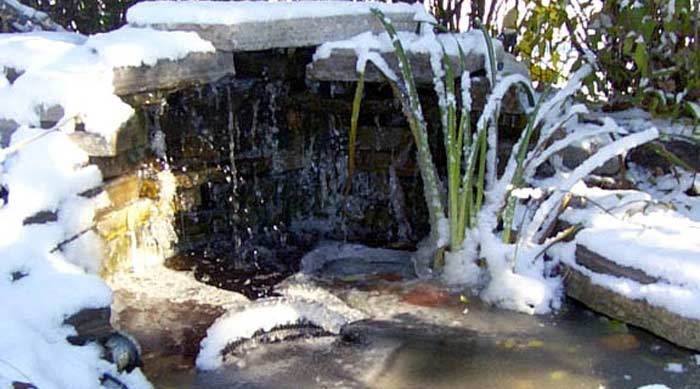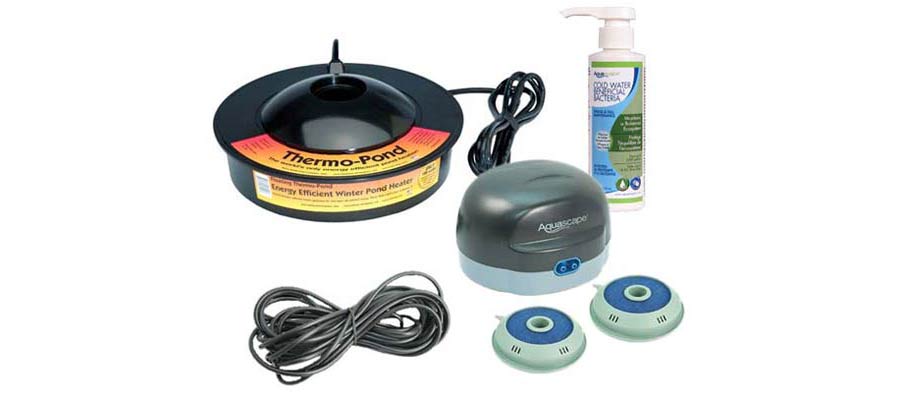Winter Pond Checklist
If you haven’t checked your pond yet this winter, now is a good time to take a close look at your winter pond equipment, fish and water quality.
Even though your pond may seem dormant during winter, many things are still going on under the ice. Although fish’s metabolisms are very slow this time of year, they are still breathing and producing waste, just at a much lower rate than in summer. Without a proper opening in the ice, oxygen can become depleted and carbon dioxide levels can rise to dangerous levels killing your fish. Any sludge or leaves that you missed getting out last fall, will still be decomposing. Sometimes weak or old fish often die during the winter, which can cause water quality issues. The pH can also fluctuate this time of year, usually on the low side. If the pH falls below 7.0, it could be a sign that the alkalinity is low. If this is the case, the pH may slowly continue to drop until it hits a critical point when it will drastically drop below 6.0 which is deadly to fish.
An ounce of prevention is worth a pound of cure. – Benjamin Franklin.
So, although it isn’t the nicest time of year to do any maintenance on your pond, a quick check of the following things will put your mind at ease. If you do find something that isn’t right in your pond, chances are there is still time to correct it before it gets too bad.

Winter Pond Checklist
- – Make sure the pond heater or de-icer is working properly
- – Check to see if your aerator is working. Sometimes during really cold spells, the hole above the air-stone may freeze over. This is okay as long as you can see bubbles under the ice. The ice will usually melt once the temperature warms up again. If you can’t see any bubbles, there may be water frozen inside the airline. In this case, you’ll need to remove the airline and air-stone and thaw them out. To remove them from the ice, try to use hot or boiling water or a heat gun to melt the ice, this is much less stressful on the fish. If you can’t remove the airline, you can simply add a new airline and air-stone and attach it to the air pump.
- – Look for excessive foam or strong odours. This can be a sign of decaying sludge or vegetation, dead fish or even small animals. Try to locate and remove anything that has died.
- – Check Water Quality. At the very least check Ammonia and pH levels. If the ammonia is high and/or the pH is low, you’ll need to take action. These conditions won’t stabilize by themselves over the winter and will only get worse, resulting in a lot of dead fish next spring. You can still do partial water changes this time of year by running water into the pond through the opening in the ice. Remember to use a dechlorinator if you are on town water.
- – If you can see your koi or goldfish, try to get a good look at them to check for any signs of disease or unusual behavior, such as gasping at the surface.

